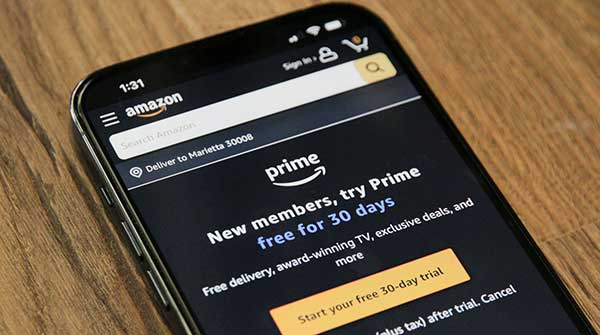How the subscription economy revolution rewrote the rules
 Venture-funded entrepreneurs taking advantage of the Internet’s ability to offer subscriptions and the ease of signing up and auto-paying are launching subscription-based companies in droves, resulting in the subscription economy, which grew dramatically during the pandemic.
Venture-funded entrepreneurs taking advantage of the Internet’s ability to offer subscriptions and the ease of signing up and auto-paying are launching subscription-based companies in droves, resulting in the subscription economy, which grew dramatically during the pandemic.
Let’s look at the ultimate subscription service that wouldn’t exist without the Internet: Netflix.
You probably remember Blockbuster, the video rental giant founded on October 19, 1985. For nearly two decades, it was the go-to spot on Friday nights for families. At its peak, it had 9,000 stores. By 2010, it had gone bankrupt. What happened?
In 1997, Reed Hastings went to return the movie Apollo 13 and was hit with a $40 late fee, which ignited his idea for Netflix. In 2000, when Netflix was still in its infancy, Hastings proposed the following partnership to Blockbuster’s CEO John Antioco: Blockbuster would promote Netflix in its stores, while Netflix would manage Blockbuster’s brand online.
 Photo by Marques Thomas |
| More from Your Money |
| Heard of price-fixing? Say hello to discount-fixing
|
| The cash grab that drives up airfares
|
| Living the high life on a shoestring budget
|
Antioco didn’t see the benefits or value of such a partnership, nor did he have the foresight to envision where the future of video rentals was heading, so he passed on Hasting’s proposal. Within ten years, Blockbuster closed shop, and today, Netflix is worth over $207 billion.
Penalizing its customers proved to be Blockbuster’s Achilles’ heel. Netflix didn’t require retail locations, which meant significantly lower operating costs and offered a more comprehensive selection of titles. Netflix subscribers could stream videos for as long as they wanted without being concerned about returning them.
The subscription economy has always existed, especially for newspapers, magazines, and rent. (You probably never considered renting as a subscription. It could be argued that paying taxes to keep receiving government services is a subscription model.) Today, virtually everything is sold as a subscription, from socks, razor blades, meal kits, grooming products, wine, software, apps and, of course, streaming services.
A few – hardly the tip of the iceberg – subscription business models:
- Birchbox: Beauty-related products.
- Dollar Shave Club: Razor blades, men’s grooming products.
- HelloFresh: Meal kit delivery.
- Hulu: Walt Disney-owned streaming service.
- Kindle Unlimited: Unlimited access to a catalogue of over three million titles.
- Loot Crate: Gaming-related merchandise, pop-culture collectibles, and accessories.
- MasterClass: Online education.
- Spotify: Music streaming service.
My favourite (tongue in cheek), Who Gives a Crap, a toilet paper subscription service. Someone has to take advantage of our insatiable need for “convenience.”
If you can get people to sign up for a monthly subscription delivering dog treats – Woof Pack – why would you want to own a brick-and-mortar pet store with all the headaches that come with it? Entrepreneurs are betting on and winning that consumers will keep prioritizing their convenience-first attitude. It is common practice for subscription-based companies to trick, manipulate, and mislead site visitor into doing things they wouldn’t normally do to increase their success odds. I speak from experience.
A case study example of how much money the subscription economy can generate is Amazon, which in 2022 generated $35.22 billion in revenue through its Prime membership program.
Human psychology plays a critical role in web design, especially e-commerce sites or those offering a subscription. Web designers have tremendous power to guide the users to achieve the website’s goal, which for a subscription-based company is to get visitors to their website to subscribe. Commonly used tactics are to offer a free 14-day trial (after you give your credit card information), offer an incentive (e.g., a discount for the first three months), or use exit intent popup offers. Once you subscribe, unsubscribing is often difficult.
Here’s the rub: thanks to automatic payments, as opposed to when subscribers had to mail a cheque periodically to keep their subscription going, which reminded them of their subscription’s existence, subscription-based companies benefit greatly from consumers who don’t pay attention. A recent study by Stanford economists estimated that thanks to auto-renewals, inattentive subscribers boost subscription companies’ revenues by 14 percent to 200 percent. This is especially true for software and app subscriptions, which, again, I speak from experience.
Getting value from the subscription economy requires consumers to think critically and ask themselves, “Is the juice (my money) worth the squeeze (the value I’m receiving)?” As I mentioned, there’s lots of human psychology at play here, which subscription-based businesses use to design their products, services, and engagement to keep you from asking this question.
After reading this column, check your latest credit card statement, noting your subscriptions. Do they still offer you value?
Because it would require weighing convenience over environmental impact, another question subscribers to subscription services refrain from asking themselves is: How much environmental damage is my subscription causing?
Consider all that goes into delivering “stuff,” plastic wrapping, bubble wrap, boxes, the carbon footprint of delivery, returns ending up in landfills – Do you think they reshelved the Polo Ralph Lauren Heritage Court II Leather Sneaker you returned because the tan was “too dark”? – not to mention subscriptions encouraging overconsumption.
When everyone is virtue-signalling that our environment is in a freefall, nothing says, “I don’t give a damn about climate change” more than having toilet paper delivered to your front door.
Nick Kossovan is the Customer Service Professionals Network’s Social Media Director.
For interview requests, click here.
The opinions expressed by our columnists and contributors are theirs alone and do not inherently or expressly reflect the views of our publication.
© Troy Media
Troy Media is an editorial content provider to media outlets and its own hosted community news outlets across Canada.
